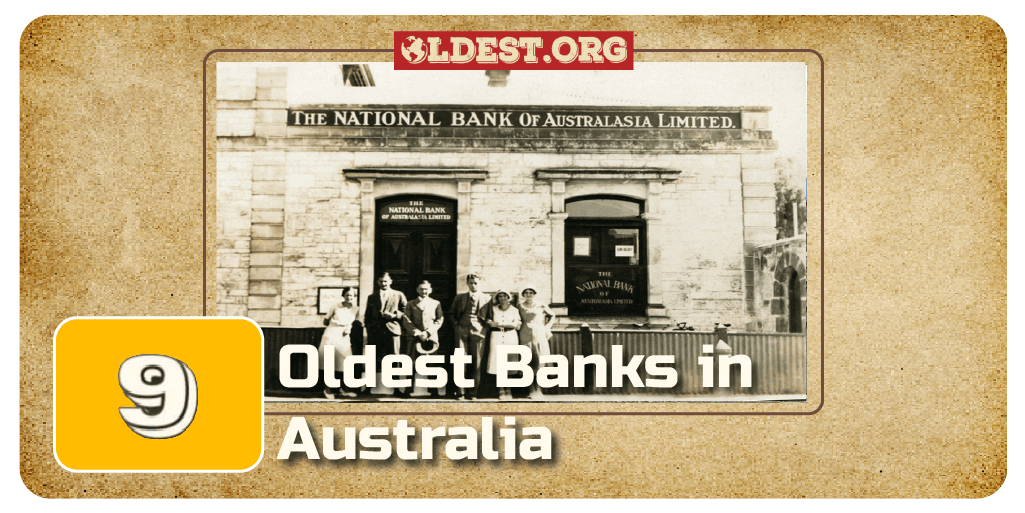Banks have played a major role in Australia’s economy since the first colonies were established in the 1800s. Despite major consolidation and mergers over the past century, several venerable banking institutions with over 150 years of continual operation live on as key parts of Australia’s “Big Four” major banks.
Let’s take a look at the 9 oldest banks in Australia that are still operating today!
9. Rural Bank Limited
Year Established: 1888
Location: Australia-wide rural regions
Still Operating: As Rural Bank Limited

Rural Bank was founded in 1888 by a group of investors seeking to fund growth and development in Australia’s rural and regional communities. Based originally in Wagga Wagga in rural NSW. The bank specializes in tailored banking services and lending for farmers, pastoralists, and other agricultural sector businesses.
Building relationships and knowledge of rural industries has allowed Rural Bank to continue independently serving Australian farmers for over 130 years through depressions, booms, and busts when many competitors failed or consolidated. In 2010, it was acquired by Bank Australia but retained operations as a stand-alone brand focused on agriculture and specialist rural lending.
Did You Know?
It survived the 1890s depression when many other rural banks failed.
8. Mutual Trust Bank (Now BankSA Under Westpac)
Year Established: 1876
Location: South Australia
Still Operating: As BankSA, a Westpac Subsidiary
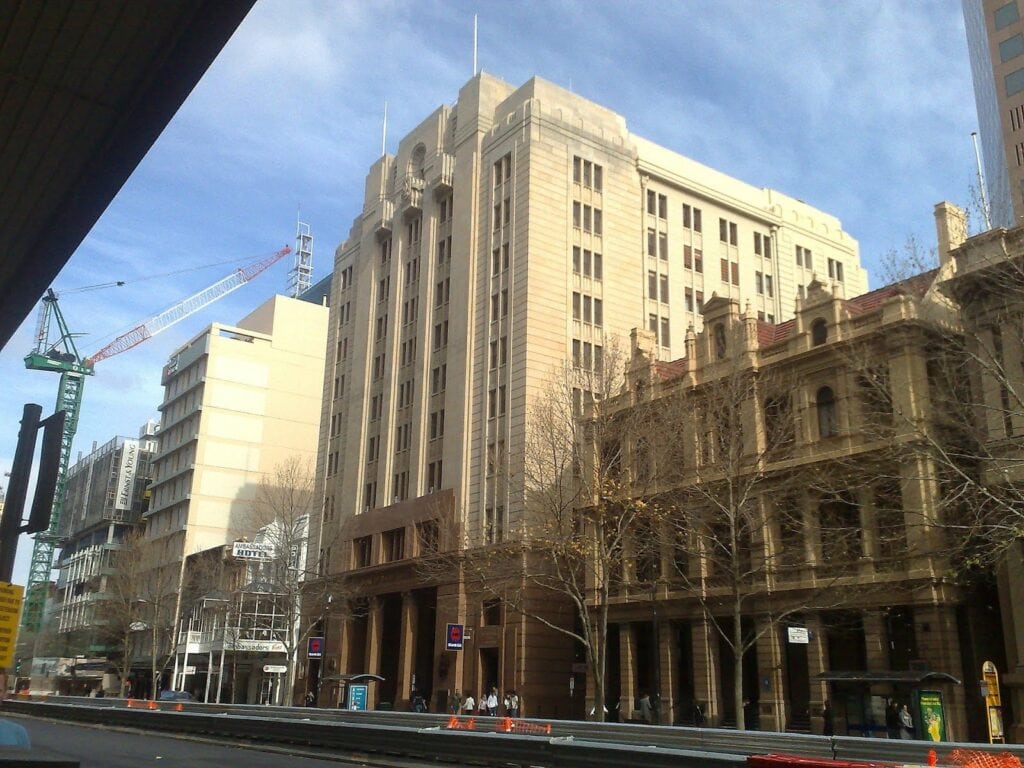
The Mutual Trust Bank was founded in Adelaide, South Australia in 1876. They operated as a building society, taking deposits and providing mortgages and loans. Its mutually owned co-operative model resonated with locals, allowing it to build generational loyalty during a century of serving South Australian communities with prudent customer-focused banking.
After demutualizing and converting into a regional bank in the 1970s, it continued independent operations focused on SA until the 1980s, when it merged into the growing Westpac group. The Mutual Trust brand name faded, but it endures today as BankSA – a popular subsidiary of Westpac brand across a network of branches in South Australia and the Northern Territory.
Did You Know?
For decades it only operated branches within South Australia due to co-op charter rules.
7. Colonial Bank of Australasia (Part of Commonwealth Bank)
Year Established: 1874
Location: Melbourne, operations across AU
Still Operating: As Part of the Commonwealth Bank
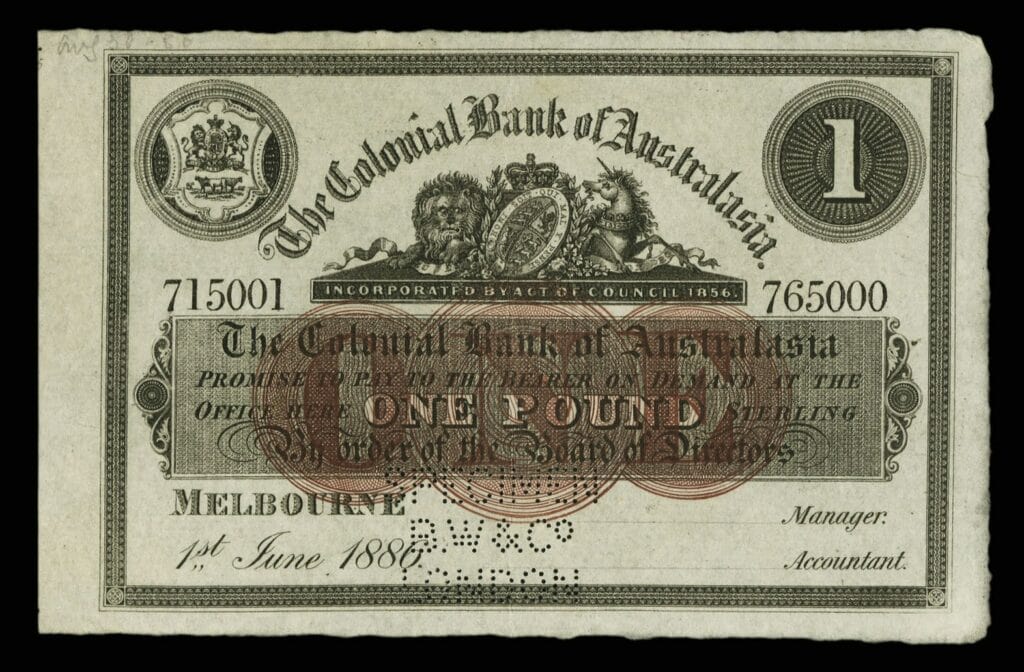
The Colonial Bank of Australasia (CBA) was formed in Melbourne in 1874 with a royal charter that allowed it to open branches and conduct business across all the Australian colonies. Its name expresses the ambition to one day operate across Australasia.
Growing steadily through prudent lending and diverse investments, by the early 1900s, the CBA had established itself as one of the largest and most trusted banks in Australia – becoming one of the “Big Four Banks” that soon came to dominate banking.
In 1941, it decided to merge with the brand new government-owned Commonwealth Bank of Australia to gain security during World War II conditions. The CBA name faded away, but it effectively became the core retail banking arm that conducts business with millions of customers for the Commonwealth Bank to this day.
Did You Know?
It released personalized checks with customer names printed on them way back in 1886.
6. Bank of Adelaide (Now Part of Westpac)
Year Established: 1865
Location: Adelaide, South Australia
Still Operating: As Part of Westpac
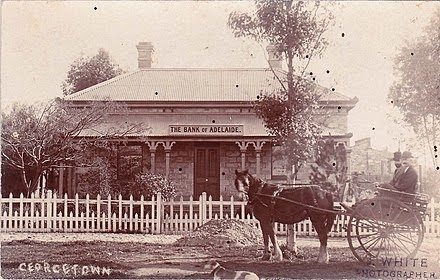
The Bank of Adelaide was founded in 1865 by a consortium of wealthy merchants and landowners who wanted to fund Adelaide’s rapid emergence as the center of the new colony of South Australia in the 1860s.
Bank of Adeline played a major economic role, funneling British capital into local industry and infrastructure projects. The bank operated independently and profitably for over a century, lasting longer than depressions and droughts.
In 1979 it decided to strategically merge with a larger institution. Later the path of integration eventually led to the Bank of Adelaide becoming a subsidiary within the Westpac Group. It ended over 100 years of proud history as an independent local bank.
Did You Know?
Its former Adelaide head office still stands today on King William Street.
5. Commercial Banking Company of Sydney (Now part of NAB)
Year Established: 1862
Location: Sydney
Still Operating: As Part of NAB
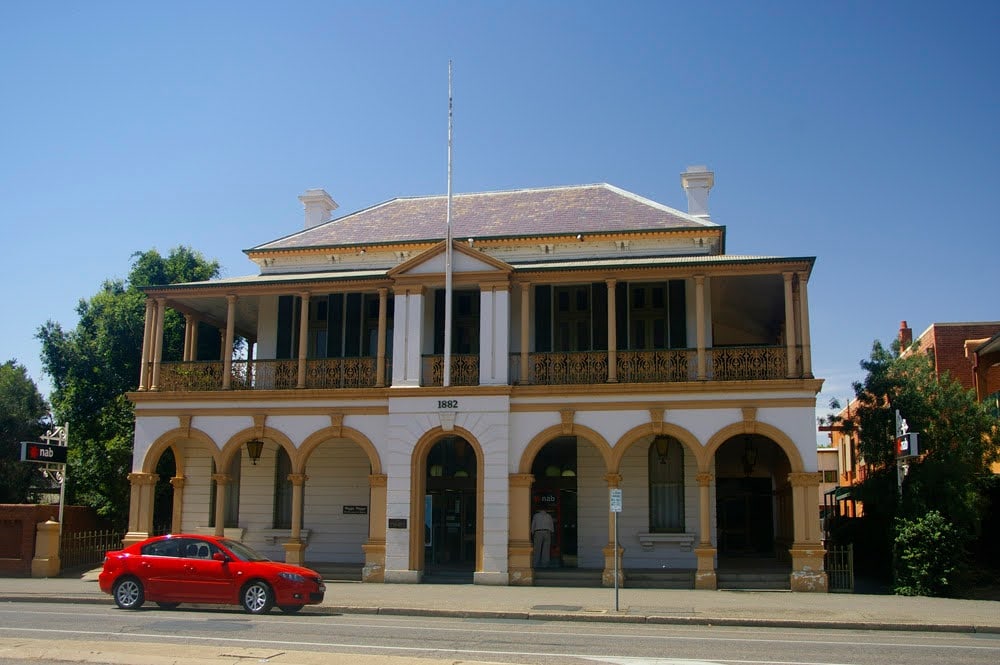
The Commercial Banking Company of Sydney (CBC) was formed in 1862. This was during a period of rapid growth for the colony of New South Wales. Sydney was Australia’s largest and fastest-growing city at the time. The CBC sought to meet the banking needs of the business community by providing capital and financial services.
The bank tried to differentiate itself as an innovative institution, becoming one of the first banks in Australia to computerize operations in the 1960s. This technology adoption and CBC’s metropolitan and country branch network expansion allowed it to grow steadily for over a century.
In 1982, the CBC decided to merge with the larger National Bank of Australasia, forming the basis of what remains today as one of Australia’s “Big Four Banks” – the National Australia Bank.
Did You Know?
CBC’s longest-serving GM was Sir Denison Miller, who later became the first governor of the Commonwealth Bank of Australia.
4. National Bank of Australasia
Year Established: 1857
Location: Australia-wide operations
Still Operating: As Part of NAB
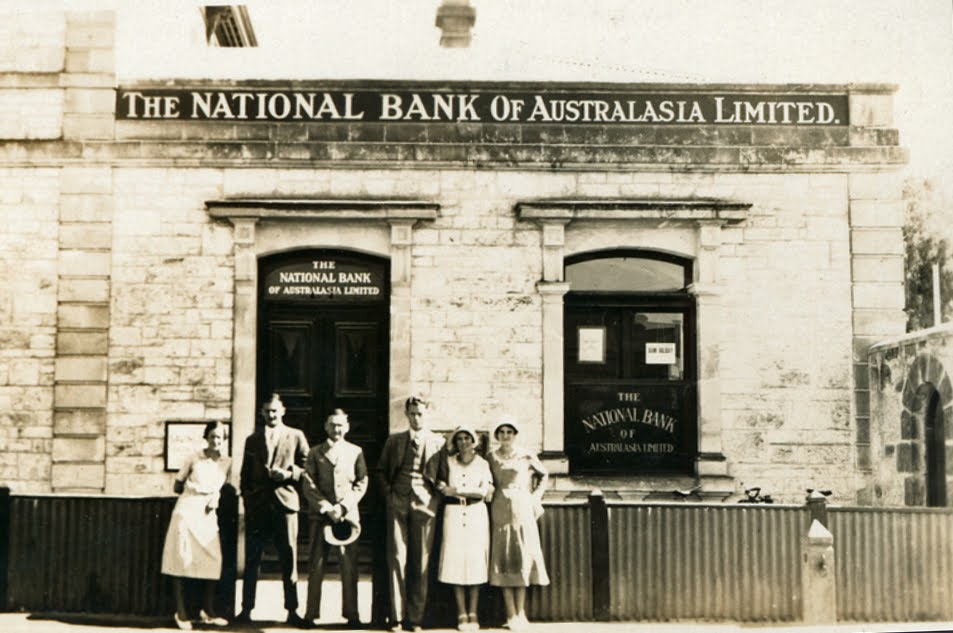
The National Bank of Australasia was established in 1857 with a specific charter to provide financing to the rural sector. This was the backbone of Australia’s early colonial economy. The bank played a major role in funding the Australian wool boom of the late 1800s.
The bank provided key capital for investments and expansion in sheep grazing and wool trading, centered on Melbourne.
The National Bank supported many farming businesses and rural landowners in accessing credit to develop their operations. They stayed focused on the agriculture sector. They continued independent operations for over a century until it merged with the Commercial Banking Company of Sydney in 1982, forming part of what is now known as the National Australia Bank.
Did You Know?
It was informally nicknamed the “hayseed bank” due to its strong ties to rural industries.
3. Savings Bank of Port Phillip (Now Bank of Melbourne)
Year Established: 1842
Location: Port Phillip District
Still Operating: As Bank of Melbourne
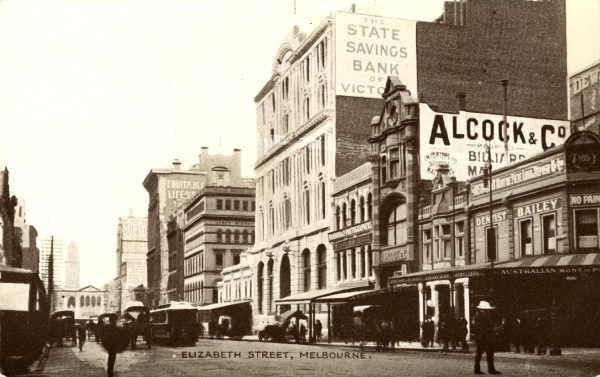
The Savings Bank of Port Phillip was founded in 1842 as the first savings bank established specifically to serve the pioneer settlers and farmers pouring into the Port Phillip District around Melbourne in the 1840s. Its early locations right on Collins Street and Flinders Street put it at the heart of the young city and colony of Victoria.
The bank maintained its tight local focus on community banking for over a century, gathering loyalty and supporters with its participant model. This allowed it to remain independent as the Savings Bank of Port Phillip until the late 1990s. After a series of mergers, it now operates branches across Australia under the name of Bank of Melbourne.
Did You Know?
Its long-time headquarters was a landmark building on the corner of Collins and Queen Street.
2. Launceston Bank (Now part of ANZ Bank)
Year Established: 1828
Location: Launceston, Tasmania
Still Operating: As Part of ANZ Bank
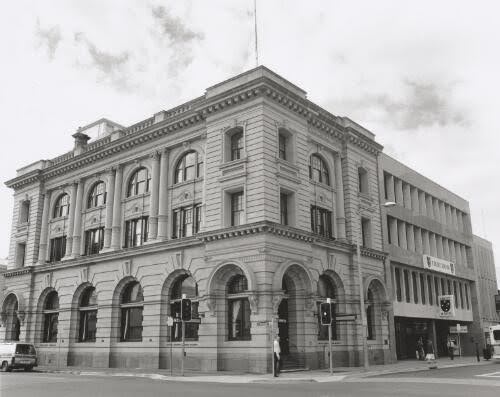
The Launceston Bank began operations in 1828 as the Cornwall Bank – founded by local merchants and landowners to serve the pioneer farmers and business community developing across Northern Tasmania in the 1820s.
It later merged with and was acquired by several larger banks over 190 years, ending up as part of the Australia and New Zealand Banking Group (ANZ) today.
During its long history, it played an important role in providing banking and finance to support the growth and development of Launceston and its rural hinterland. The bank acted as the main economic hub of Northern Tasmania before state-wide networks were established.
Did You Know?
The Cornwall Bank was sold by its owners as more banks were established in the region. In 1835, the Bank of Australasia absorbed Cornwall Bank.
1. Bank of New South Wales (Now Part of Westpac)
Year Established: 1817
Location: Sydney
Still Operating: As Part of Westpac Banking Group
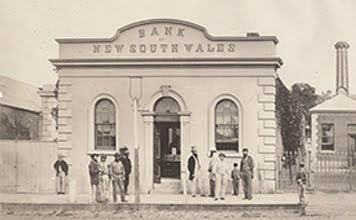
The Bank of New South Wales was founded in 1817. They basically financed the rapid growth of the new Sydney colony in Australia’s early 19th-century frontier era. As business activity and trade picked up through Sydney’s port, the bank expanded steadily to provide needed capital and financial services.
By the 1850s, it had established branches throughout the colonies and in New Zealand to support the development of the produce and resources sector.
The bank grew with smart investments and mergers to become one of Australia’s “Big Four Banks.” It merged with many smaller institutions before finally combining with the Commercial Bank of Australia in 1982 to form the modern-day Westpac banking group. Now they have over 2 centuries of continuous banking services in Australia.
Did You Know?
It was nicknamed “the Wales” in early Sydney for its name and links to the old country.
Conclusion
These oldest banks in Australia turned British capital into loans and investments that funded the development of farms, towns, cities, and infrastructure, which was needed to turn Australia from a far-flung colony into a modern nation.
Despite depressions, recessions, and technology disruption, these banks continue serving Australian customers today, whether as Big Four giants or smaller independent regional institutions grounded in communities.
They form the foundation on which Australia’s stable, prosperous economy is built.


